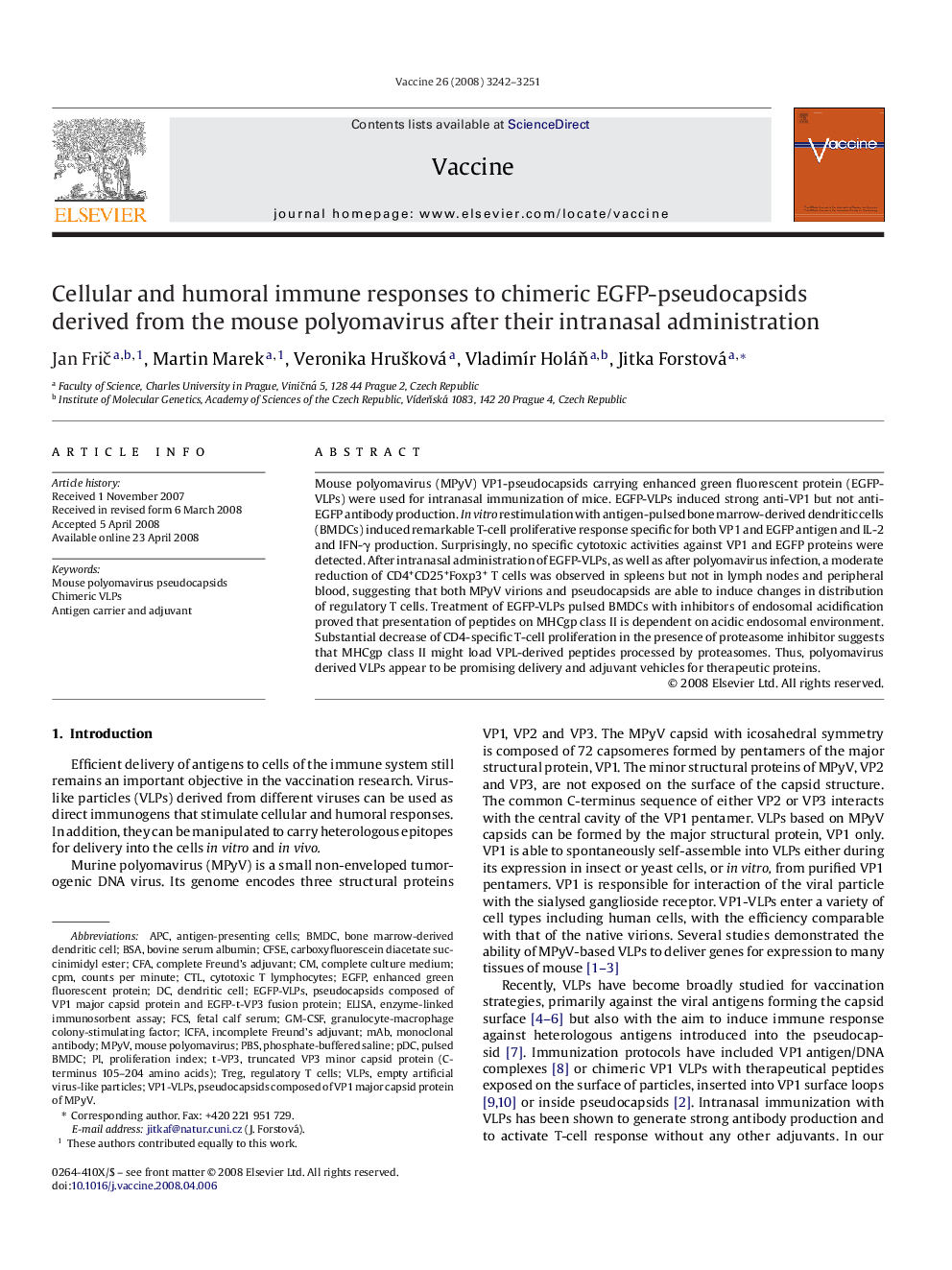| Article ID | Journal | Published Year | Pages | File Type |
|---|---|---|---|---|
| 2407833 | Vaccine | 2008 | 10 Pages |
Mouse polyomavirus (MPyV) VP1-pseudocapsids carrying enhanced green fluorescent protein (EGFP-VLPs) were used for intranasal immunization of mice. EGFP-VLPs induced strong anti-VP1 but not anti-EGFP antibody production. In vitro restimulation with antigen-pulsed bone marrow-derived dendritic cells (BMDCs) induced remarkable T-cell proliferative response specific for both VP1 and EGFP antigen and IL-2 and IFN-γ production. Surprisingly, no specific cytotoxic activities against VP1 and EGFP proteins were detected. After intranasal administration of EGFP-VLPs, as well as after polyomavirus infection, a moderate reduction of CD4+CD25+Foxp3+ T cells was observed in spleens but not in lymph nodes and peripheral blood, suggesting that both MPyV virions and pseudocapsids are able to induce changes in distribution of regulatory T cells. Treatment of EGFP-VLPs pulsed BMDCs with inhibitors of endosomal acidification proved that presentation of peptides on MHCgp class II is dependent on acidic endosomal environment. Substantial decrease of CD4-specific T-cell proliferation in the presence of proteasome inhibitor suggests that MHCgp class II might load VPL-derived peptides processed by proteasomes. Thus, polyomavirus derived VLPs appear to be promising delivery and adjuvant vehicles for therapeutic proteins.
